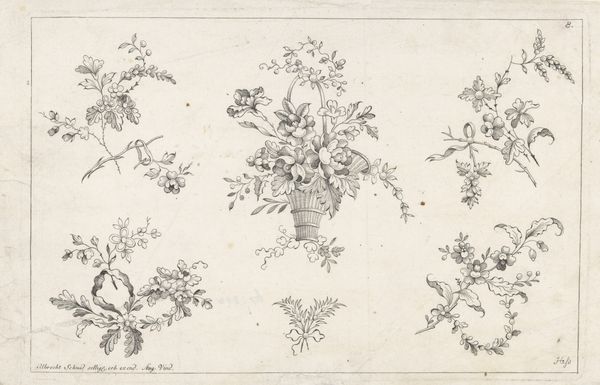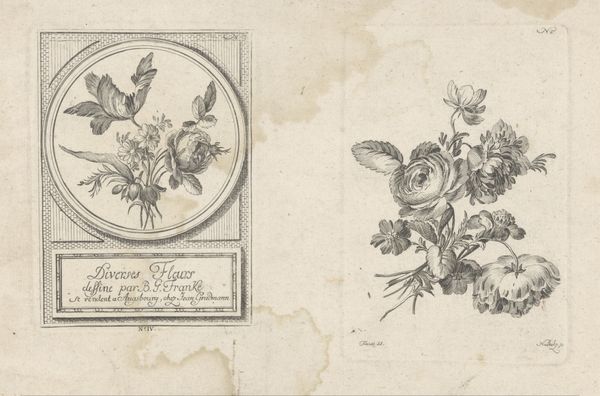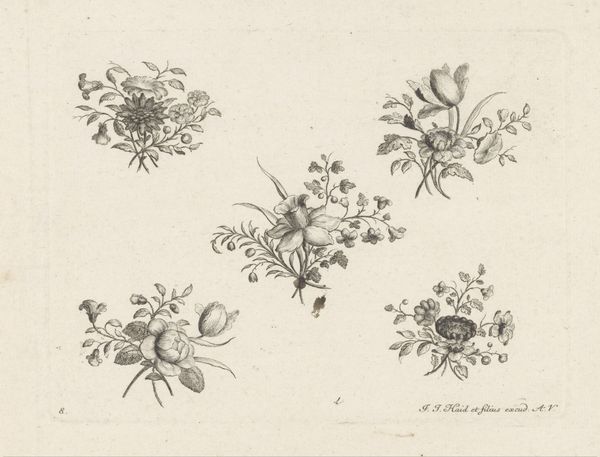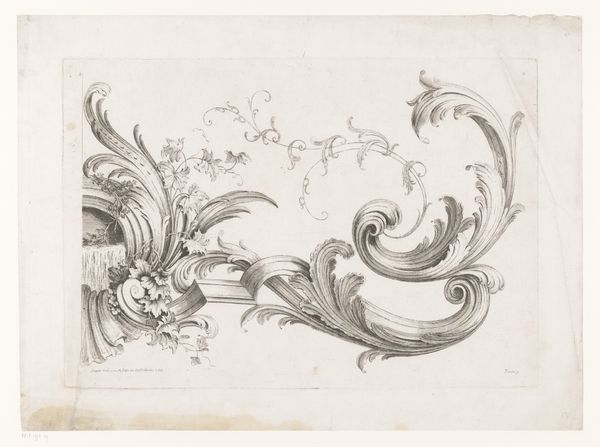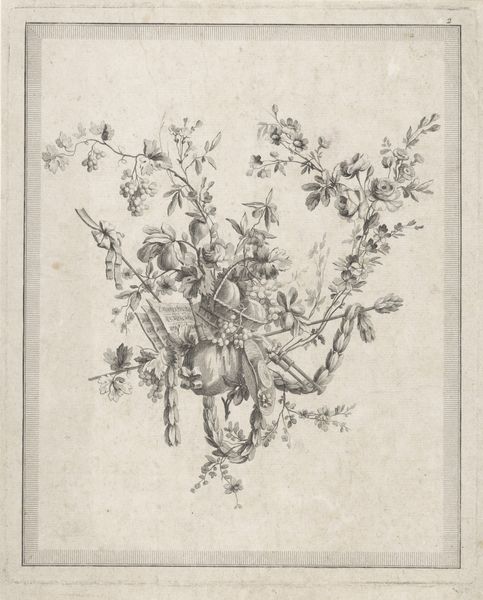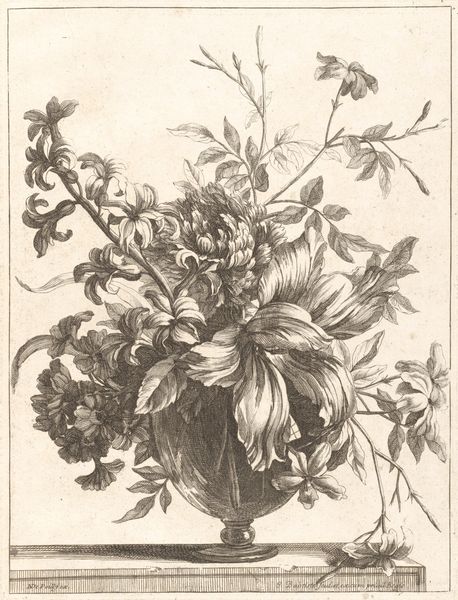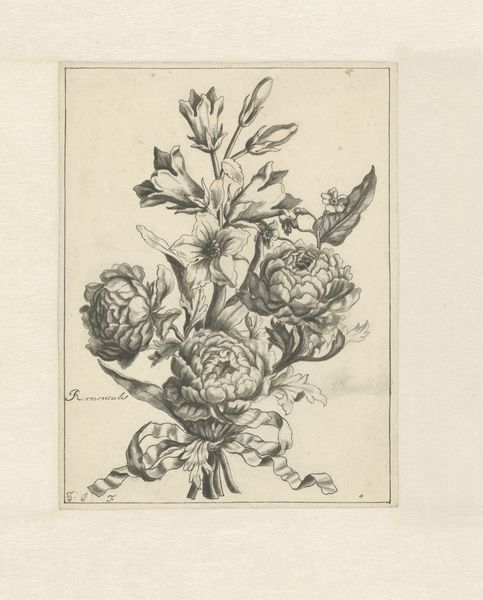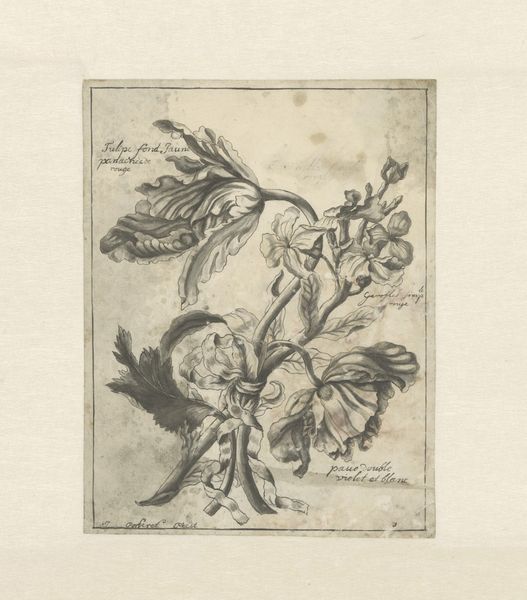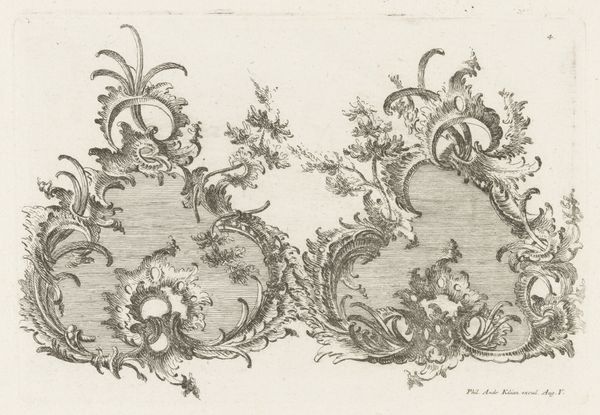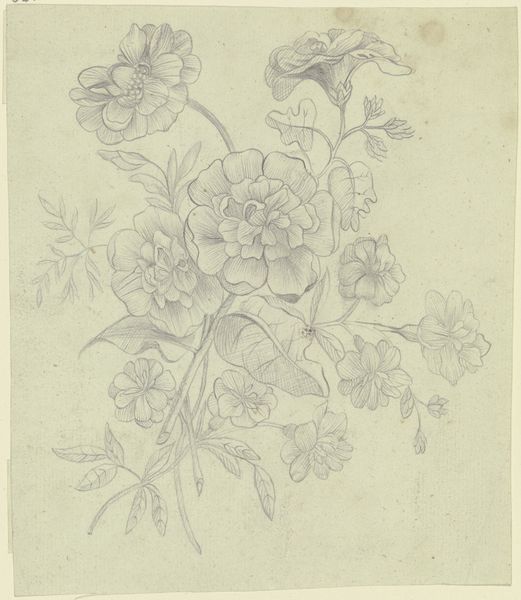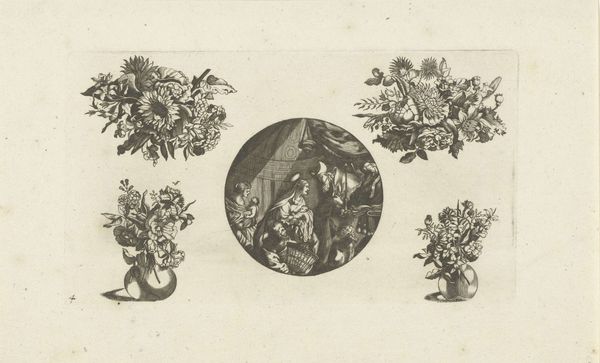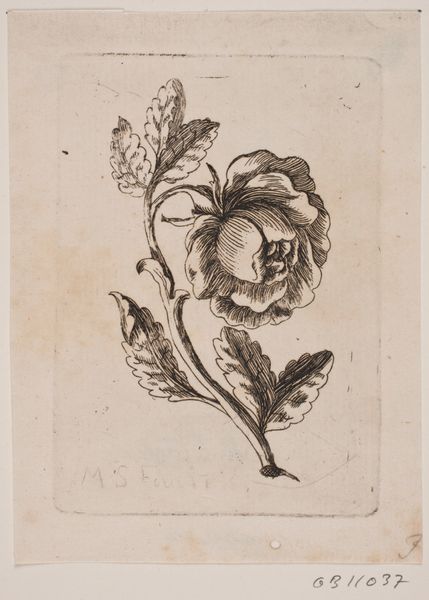
drawing, print, paper, engraving
#
drawing
# print
#
pencil sketch
#
paper
#
engraving
#
realism
Dimensions: height 143 mm, width 97 mm, height 93 mm, width 89 mm
Copyright: Rijks Museum: Open Domain
Curator: At first glance, it looks quite delicate. Editor: Indeed. What we have here is "Diverse bloemen," or "Diverse Flowers," attributed to Johann Christoph Nabholz, created sometime between 1762 and 1797. It's a print, using both engraving and pencil sketch on paper, currently held in the Rijksmuseum. Curator: The combination of engraving and pencil work makes you consider the social status of printmaking in that period. How did the addition of pencil alter the accessibility and potential economic value of these works? It softens the traditionally graphic qualities of engraving with softer lines. Editor: The rise of the print market in the 18th century truly democratized art consumption. Works like this circulated widely, and that distribution had a massive influence on broader taste and aesthetic values across society. Botanical illustration, especially, became popular for both artistic and scientific interest. Curator: It’s fascinating how the rendering balances scientific observation with artistic flourish. Look at the detailing in the petals; you see the artist demonstrating a keen understanding of their structure, but without losing their appeal in conveying botanical knowledge as a refined skill or domestic hobby for the merchant and artisan classes. Editor: Precisely. Think of the printmaker's role in disseminating scientific understanding alongside aesthetics. A piece like this demonstrates the intertwined functions of art and science in the period's intellectual climate. How social institutions validated botanical illustration, which eventually turned into popular home decoration that elevated artisans. Curator: Looking closely at the medium, the marks on the paper itself, show the trace of age, watermarks... Editor: Yes, and such details help trace provenance and reconstruct the social context in which this piece was collected, viewed, and appreciated over centuries. Curator: Reflecting on it, considering its medium and intent gives insight into the complex dance of commerce and skill in the history of printed images. Editor: And for me, it shows how accessible art informed not only artistic trends but broader shifts in social values as well.
Comments
No comments
Be the first to comment and join the conversation on the ultimate creative platform.
